|
After every performance, one of Nen Daiko’s favorite moments is when audience members share photos and videos. We never take it for granted – the opportunity to play taiko – and having these moments saved and shared means so much. If you love photography and videography, we’d LOVE to see you at our performances this season. The busy season is late-March to early-July. These can be a great opportunities for you to capture photos with dynamic movement and expressions for your portfolio. If you let us know in advance, we can also work to save you a seat near the front. In some venues, we might be able to suggest other great vantage points. 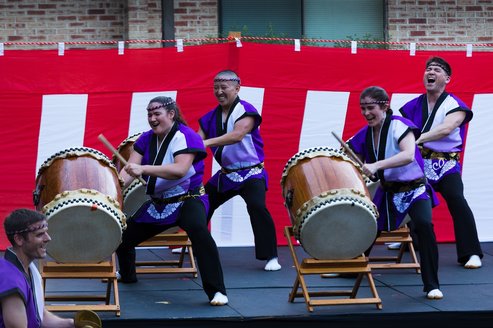 Obon 2016 photo by Don Smith Obon 2016 photo by Don Smith We reached out to some of the kind photographers who have shared their talents over the years for advice on how to take great taiko photos – and they sent a HUGE amount of tips that we are excited to share. We hope this inspires you to bring your cameras and phone to our upcoming performances! What camera should I bring to a taiko performance?Mike Gallan There is a phrase, "the best camera is the one that's with you". If a point and shoot camera or smartphone is what you have, by all means use it! Similarly, don't get a camera that's so bulky that you're unlikely to bring it. Don Smith Your creativity and imagination are probably more important than technical considerations. You will be happier with your results, however, if you use a camera that allows you to set the shutter speed and aperture. Bruce Guthrie Every camera today can take decent pictures and "auto" works for quite a lot of what you're going to photograph. Unfortunately, "auto" doesn't always realize the drumsticks are moving fast like hummingbirds. If your camera has the chops, screw around with the ISO setting, try for quicker exposures (ISO 3200 can be a godsend). Most cameras have a setting somewhere that lets you adjust the ISO. Is it appropriate to use my flash during performances?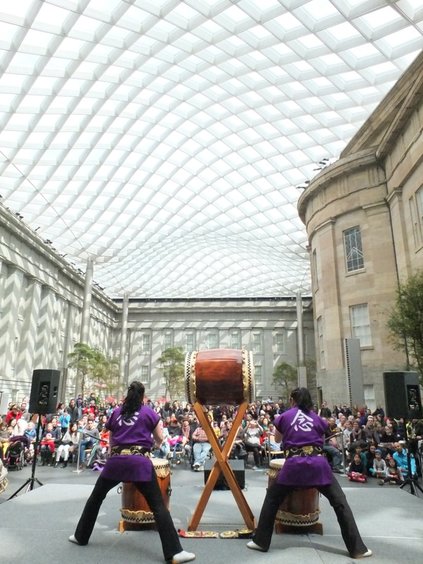 SAAM Cherry Blossom Celebration photo by Bruce Guthrie SAAM Cherry Blossom Celebration photo by Bruce Guthrie Bruce Guthrie The “auto” setting on some cameras will automatically invoke flash photographs. Flash photography is useful and necessary sometimes but it's annoying to the audience as well as to the performers. It's also usually not going to be powerful enough to adequately cover more than one or two performers at a time and it can take some time for most camera batteries to recover from taking flash photographs so you're going to miss other shots. See what tricks your camera can do to avoid flash. Mike Gallan I keep my flash disabled. Flash can disturb the performance and in continuous shooting mode the flash just can't keep up. A high ISO value can be used if there's not enough light. How do you frame your shots to get a great taiko photo?Don Smith Think as a visual storyteller, and plan a mix of wide and close-up shots. Capture dramatic movements -- including drummers suspended in mid-air -- and facial expressions. 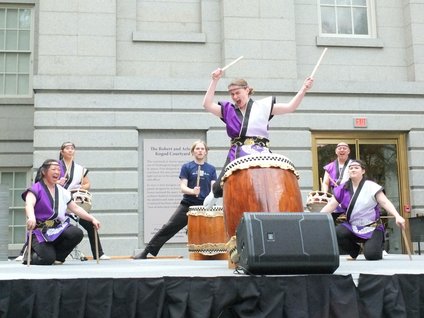 SAAM Cherry Blossom Celebration 2016 photo by Bruce Guthrie SAAM Cherry Blossom Celebration 2016 photo by Bruce Guthrie Bruce Guthrie: Figure out how you can get an interesting perspective on the picture. Straight-on photographs are frequently fine but consider photographing from below (seeing drum sticks up in the air is pretty cool) or the side (drum sticks don't look like drum sticks unless you can actually see them in length). Drumsticks flailing are cool and, yes, feel free to highlight the things. But don't forget the performers' faces! It gives scale to the picture and makes the photographs mean a whole lot more to the group you're photographing. A public performance has two components: the performers and the folks watching the performance. Catch spectators when you can... unless you're afraid that will tick them off in which case don't. Panorama shots are great for audience shots but keep in mind the folks on stage may be moving too fast for the shots to come out. Groups play in lots of different places. And, you know what, every stage pretty much looks the same. If you're just photographing the performers, you'll lose track of where they were performing. Try to get shots of the subject within the setting. Maybe a shot from below will highlight the ceiling which might be unique. If you're allowed to get behind the subject and photograph toward the audience, make sure you catch the venue. 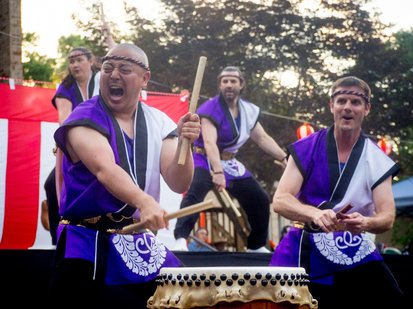 Obon 2016 photo by Mike Gallan Obon 2016 photo by Mike Gallan Mike Gallan Identify and emphasize the subject of your photo. Maybe it's a single person, a few people interacting, or even an inanimate object. Then get close. Move forward, zoom in, or crop to remove the clutter and draw attention to the subject. During the performance periodically review your photos and make sure they're turning out as expected. Make sure things are in focus. It's easy to accidentally change a camera setting and have an entire set of shots be blurry. 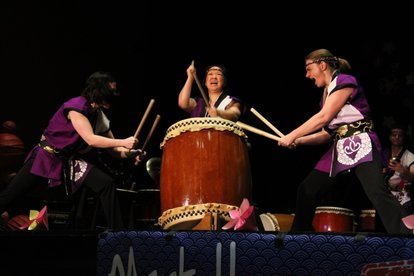 Sakura Taiko Fest 2016 photo by Sarah Gilbert Sakura Taiko Fest 2016 photo by Sarah Gilbert Sarah Gilbert, Soh Daiko member & photographer One way to increase your success rate: know the repertoire. If you are planning ahead of time to photograph a taiko performance, and especially if the group has requested your services, try to learn some of the repertoire; get a feel for how the group and even specific performers operate. Check out their YouTube videos, or if you are the contracted photographer, ask the group what pieces they'll be performing and if they can share clips of those pieces with you. This will allow you to come up with an informal (or formal, if that's how you roll) shot list and prepare you to capture the best moments - and there will be many of them, so be ready! What lens should I bring to a taiko performance?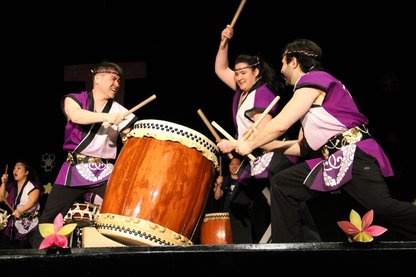 Sakura Taiko Fest 2016 photo by Sarah Gilbert Sakura Taiko Fest 2016 photo by Sarah Gilbert Sarah Gilbert, Soh Daiko member and photographer For an indoor event with typical stage lighting, the number one must-have for taiko event photography is a lens with a wide aperture, or in other words, a low f-stop setting (f1.4-2.8 is ideal, in my opinion). Having a wide aperture means having a fast lens that will allow in much more light, which is imperative given the speed that taiko players use when striking a drum and, often, jumping around the stage. You could get away with something in the f-5 range, but you'll be sacrificing the sharpness of your images and saddling yourself with a lot more post-processing to correct the lighting. For outdoor photography, it's dealer's choice as far as lens selection goes. The major difference here is that you'll often have more flexibility when it comes to moving around the stage/performance area; with an indoor event, you'll likely want a lens with a bit of range to zoom and get a variety of shots, while outdoors you can move around and take advantage of a prime lens. Helpful, but not required, is a wide angle lens. Taiko is an incredibly interactive art form, with the performers not only interacting with and engaging the audience, but also each other. Using a wide angle lens allows you to capture more of that perspective surrounding your focal point while maintaining a more natural depth. Bonus: it's so much easier to capture that sweet full-group pose at the end of a high-intensity piece. Don Smith A mid-range zoom lens (something in the 24mm-105mm range) will help you to get a good mix of group and individual shots. Mike Gallan I like to zoom in close on subjects so a telephoto lens is key for me. I use a basic Canon 55-250mm telephoto lens that can be found for under $150. What settings are helpful when photographing taiko?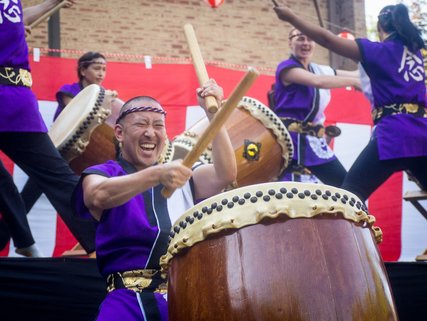 Obon 2016 photo by Mike Gallan Obon 2016 photo by Mike Gallan Mike Gallan Aim for the fastest shutter speed possible. I'd suggest 1/250 at a minimum, but 1/500 is better. This will allow you to freeze motion and expressions. Some people like to use a shutter priority mode ("Tv" or "S") for this. If you're in a lower-light situation you may need to set your ISO to a higher value (1600, 3200, etc.) and your aperture to a lower number (4.0, 5.6) to achieve a faster shutter speed. Once you're able to freeze action with a high shutter speed, try lowering it to 1/250 or 1/125 and experimenting. This can create a blurred effect on a drummer's arms and convey a sense of motion. If you have a point and shoot camera that doesn't have many manual settings try using a "sports" mode. (There may be a "running man" icon to indicate this.) I prefer to keep my camera in continuous shooting mode. This lets you capture a series of photos when the shutter button is held down. This is invaluable in situations when a drummer is moving too quickly for you to capture a precise position or expression. It also helps you avoid shots of people with their eyes closed. Be careful with this feature, though. If overused, your camera may be too busy storing photos to let you continue shooting. There's nothing worse than missing an incredible moment because your camera is still writing! 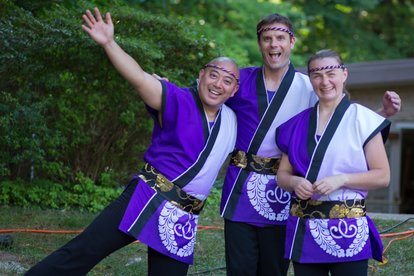 Obon 2016 photo by Don Smith Obon 2016 photo by Don Smith Bruce Guthrie Vary it a bit if you can -- do some longer exposures where you can see the motion happening -- but make sure you get some of those fast shots. Don Smith You want a shutter speed of 1/500 second or faster to freeze action; for some blur in the hands and feet to convey motion, experiment with slower shutter speeds. To isolate individuals against a blurred background, use a wide aperture (f4 or f2.8, for example; "smaller numbers" are wider apertures). Use a narrower aperture (f11 or even f16) if you want everything in focus. If you are shooting video, it is critical to keep the camera still so you don't make your viewers seasick. A good tripod makes a huge difference. Any final tips to get the best possible photos of Nen Daiko?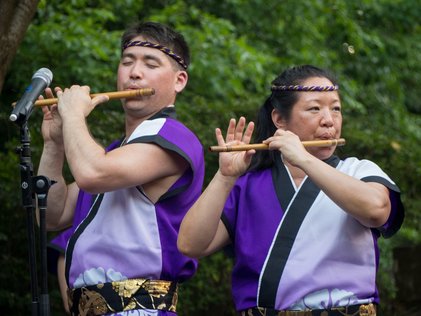 Obon 2016 photo by Mike Gallan Obon 2016 photo by Mike Gallan Bruce Guthrie If you're at a live performance, there are going to be spectators. Little kids are going to block your shots. Figure you'll lose whole chunks of them and take extras! If you try something new and it doesn't work out, try it again with a slight change. Keep at it! Mike Gallan Take *lots* of photos and be selective about what you share. I took about 200 photos of the Obon 2016 performance but only shared 18 of them. Many were near-duplicates but I still had tough decisions to make about which to include. Yes, it can be embarrassing to admit how many photos you throw away, but I believe a lot of photography is trial and error! In terms of photo editing, I use Lightroom, but there are many alternatives. Many are free. The ability to brighten "shadows" or shaded areas is a key feature for me. I'm still surprised how a little cropping or adjustment can turn a seemingly hopeless photo into a keeper. Have fun taking pictures! Shoot what catches your eye and draws your attention. For me with Nen Daiko, it's always about capturing energy, power, and the joy and camaraderie of the performances. Thank you to our volunteer photographers for their wisdom!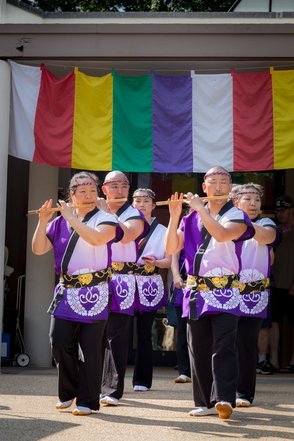 Obon 2016 photo by Don Smith Obon 2016 photo by Don Smith We hope you have fun taking photos at our performances and then you’ll share your favorites with us! We love to share them with fans over social media and we are dedicated to always listing photo credits. If you use Instagram, remember to tag photos from our performances with #nendaiko. We’ll be checking and re-sharing your photos on our account! Thank you AGAIN to Sarah, Bruce, Mike and Don for sharing their talents. We hope you are inspired!
0 Comments
|
Archives
October 2023
Categories
All
|
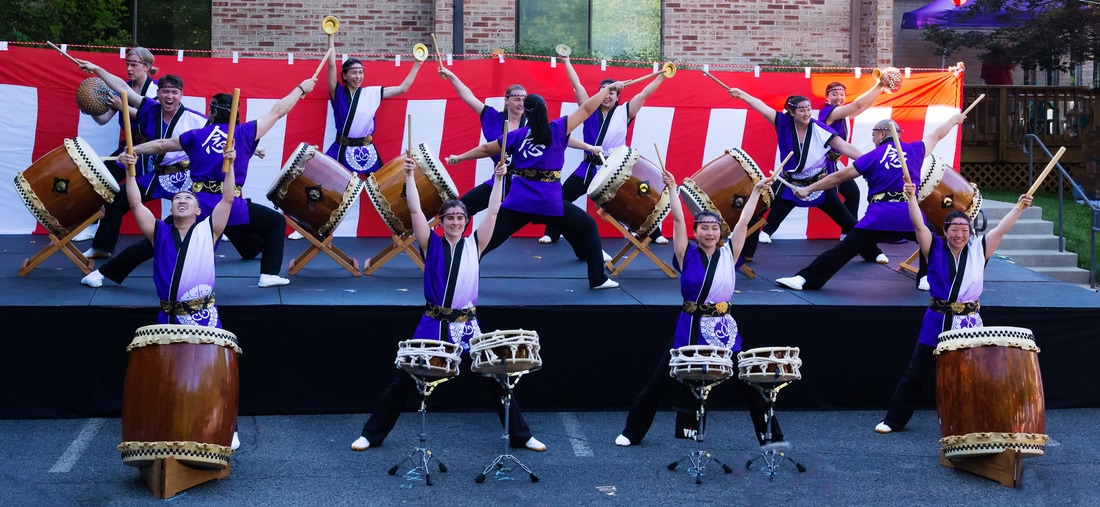
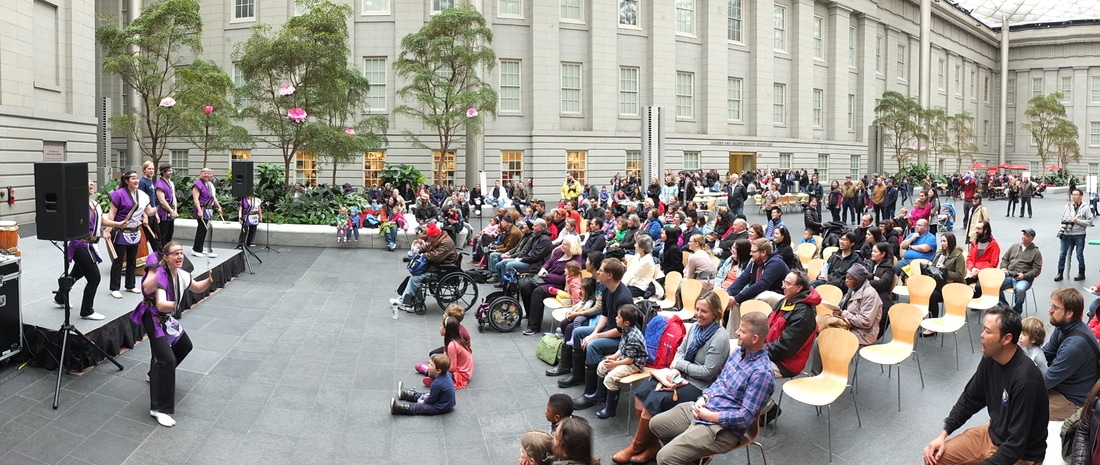
 RSS Feed
RSS Feed